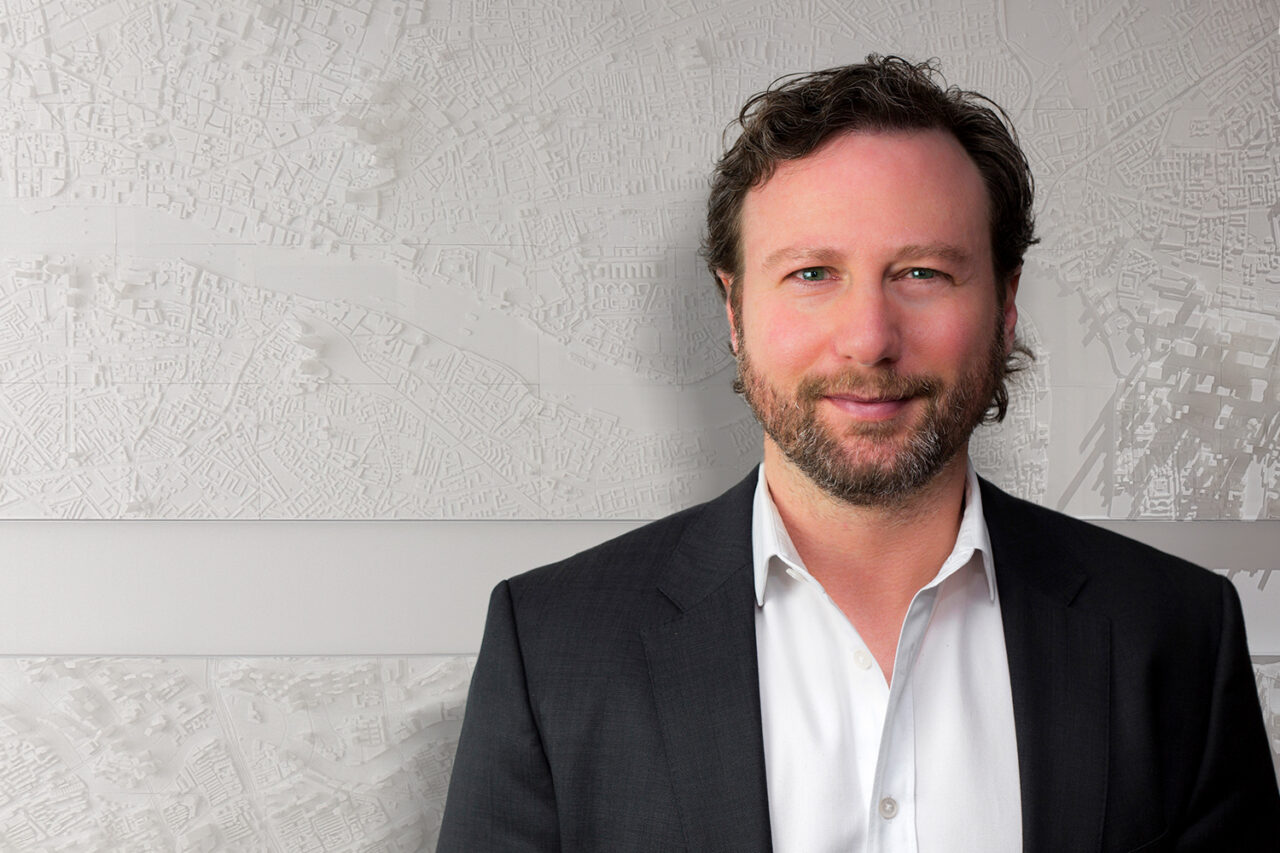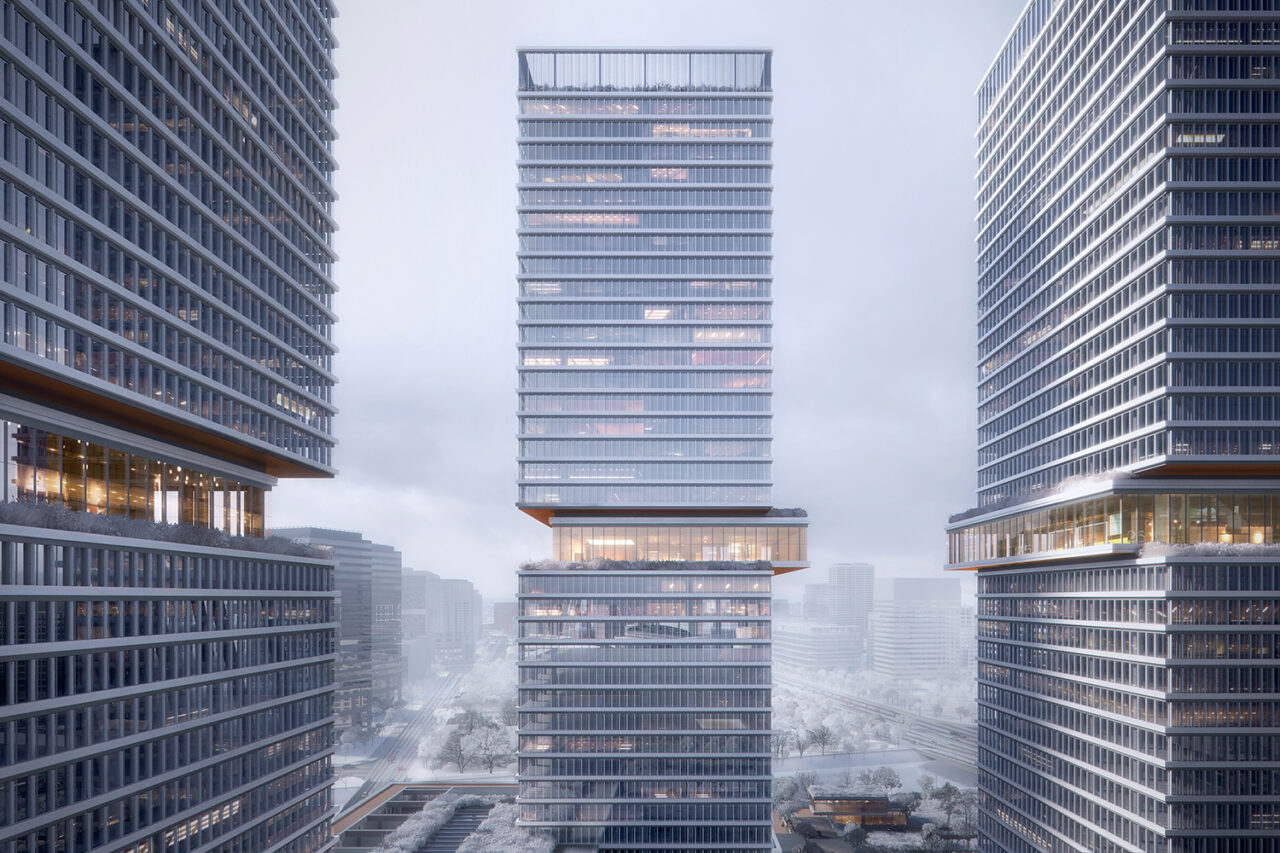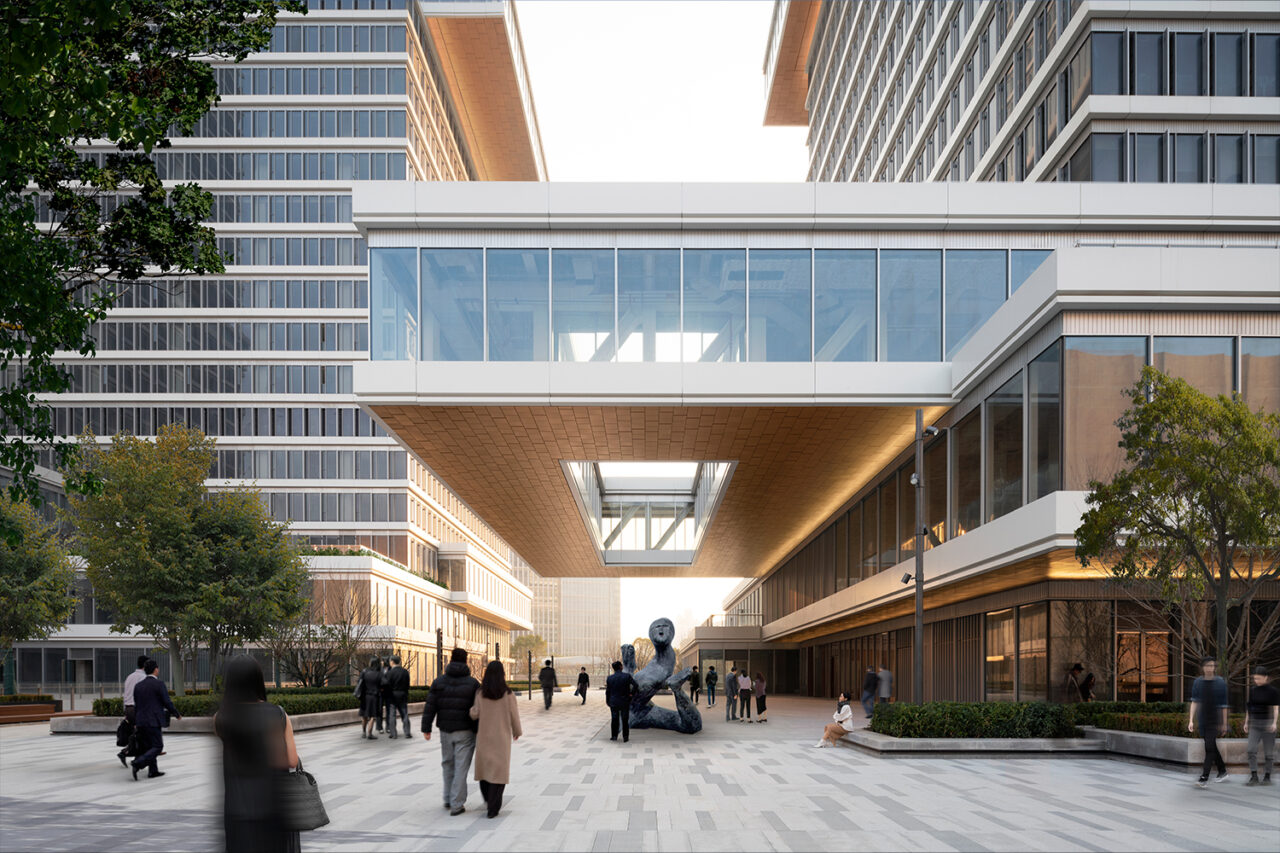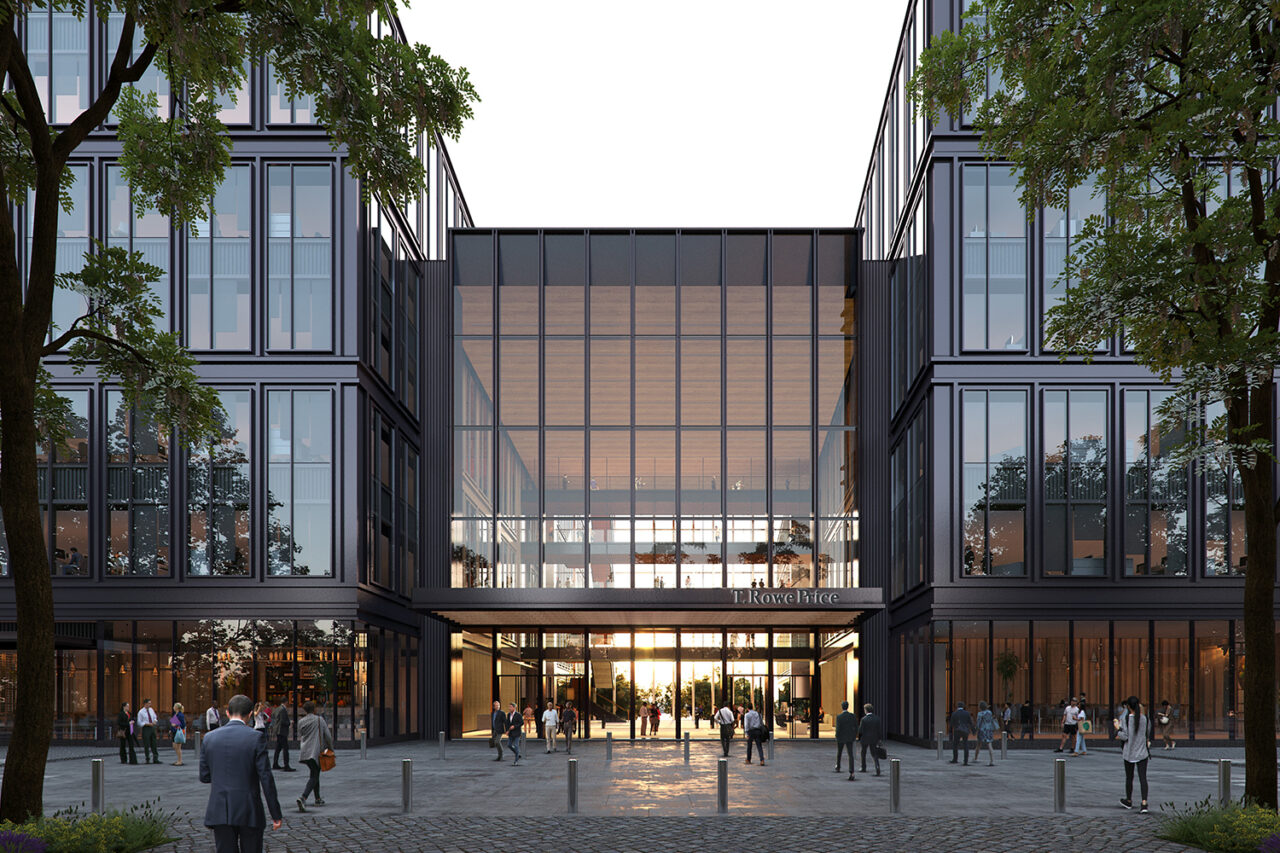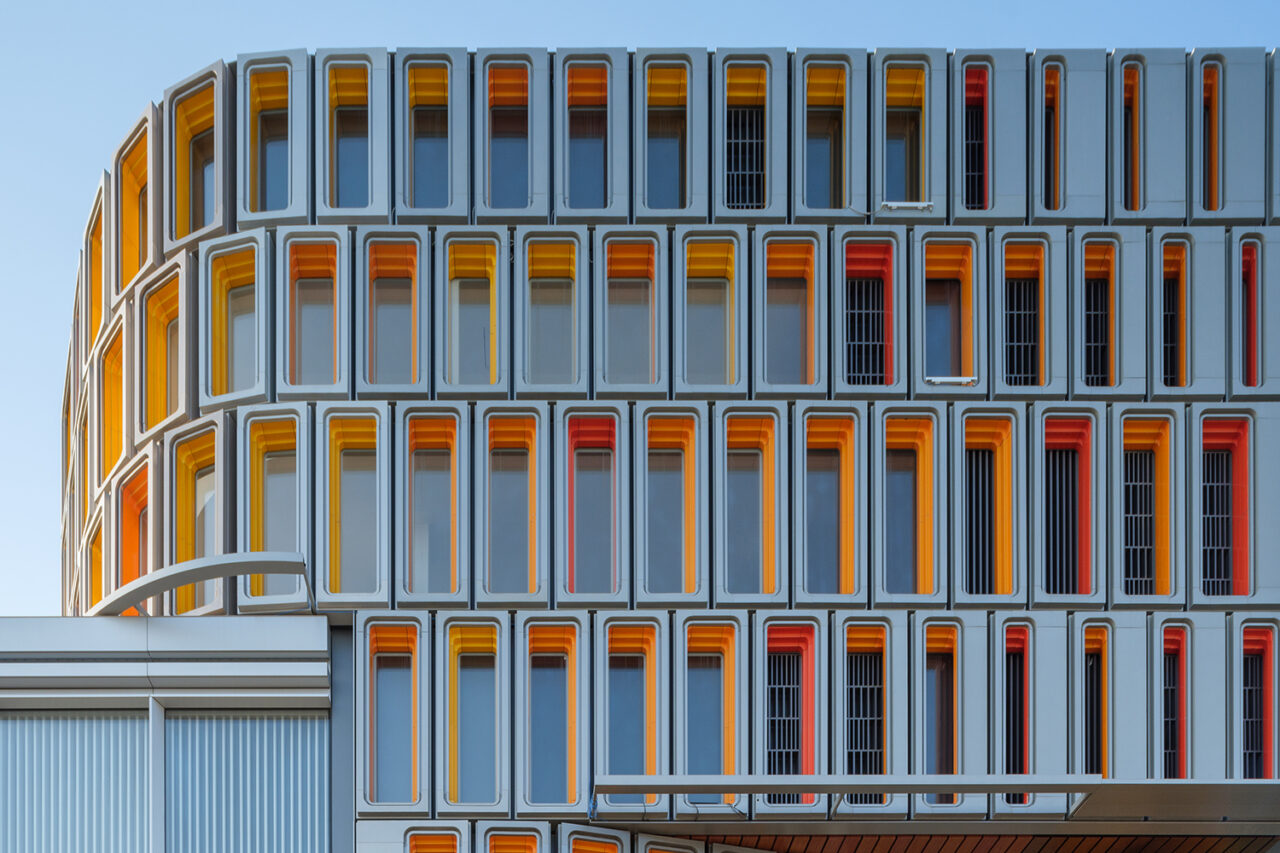by: AIA New York
Through his work, lecturing, and academic involvement, Jeff Kenoff, FAIA, is transforming urban architecture through projects that redefine connectivity and public space with purposeful articulation of scale, materiality, and humanization from the ground to the sky. With over 30 years of experience, Kenoff is a Design Principal at Kohn Pedersen Fox in New York City and has become a guiding figure in the practice of blending architecture with urban design. His portfolio includes a wide range of program types with an emphasis on urban connectivity and vertical urbanism. Kenoff led the designs of Huamu Lot 10 in Shanghai; T. Rowe Price Headquarters in Baltimore; Sequis Centre in Jakarta amongst many others and was one of the Design Principals of One Vanderbilt in New York. He has delivered lectures on his work worldwide as well as served as a visiting critic at Harvard University, MIT, Yale University, and Columbia University, and his projects as well as research have been published globally.
This year, the Jury of Fellows of the AIA elevated Kenoff to its prestigious College of Fellows in the first category of Fellowship, which recognizes architects who have “Promoted the aesthetic, scientific, and practical efficiency of the profession,” according to the organization’s definition. Only three percent of the AIA’s membership is distinguished with Fellowship. Kenoff’s distinction will be celebrated at the AIA Conference on Architecture from June 5–8 in Washington, DC, and was also recognized at AIA New York’s Center for Architecture during the 2024 New Fellows Celebration.
Q: What is influencing your work the most right now?
Cities are often discussed as visions of rational density, playgrounds, cultural centers, or even as the ultimate armatures to support essential public space. Regardless of how one experiences urban environments, they are challenged, or arguably do not perform, when disconnected. My work now is largely influenced by the importance of connected cities and finds itself at the intersection of architecture and urbanism. It’s most easily defined by a pedagogy of urban connectivity meeting vertical urbanism. One in which each project understands its role as a constituent of a larger urban fabric over time.
A recent paper “Towards an Urban Troposphere” which I co-authored for CTBUH explores the idea of a vertical and connected urbanism that not only exists at the ground, but also within the troposphere: the first level of the atmosphere. It creates an argument that this upper urban fabric is where the greatest potential for façade and programmatic innovation can occur as architecture in cities further advances. Thus, as we look at a buildings urban impact, there are questions about how we dimensionalize public space as in Lot 10, humanize facades like Westlake 66, respond to unique forces of a city like T. Rowe Price HQ or promote extroverted programs to activate streets like the One Vanderbilt podium. All come together with the hope of creating smarter and more thoughtful urban experiences through architecture.
Q: What are your greatest sources of inspiration?
I’ve always believed you need to cross a line to find it. My father was a chemist and to this day, be it DNA, fate or simply admiration, I believe a design process is about constant experimentation through an assembly of components until, like it or not, you find the right line to cross.
I also find inspiration from multiple voices outside of architecture including creators such as Dieter Rams, Donald Judd or even Massimo Vignelli. These individuals assemble the unexpected in thoughtful and ultimately profoundly simple ways. I’m always moved by the singular whole, beautifully encapsulating a diverse group of parts. Playwright Tom Stoppard said on words, “If you get the right ones, in the right order, you can nudge the world a little.” I believe this to be true for any assemblage and especially architecture.
Q: What are some of your favorite recent projects that you’ve worked on?
Clearly, they are all favorites, and each explores a set of issues impacting a greater body of work. With that said, Huamu Lot 10 would be one easy answer as it’s not often you can get 69-foot cantilever or a tower that attempts to redefine the tall building by its center as opposed to its top. For the design itself, it purposefully wanted to seek a bold response to its unique urban conditions by activating a riverfront, fostering a new public space, and merging its three towers with the adjacent museum. At the street, shifting and hovering roof terraces guide visitors toward the river. Above, expansive cantilevers create Sky Galleries that visually and formally connect to the pedestrian scale below. The impact is an undeniable pedestrian datum that establishes a new form of participatory urbanism novel to Shanghai at both the ground and sky.
In addition, favorites like Westlake 66 allowed for the exploration of a sinuous multiblock façade strategy, T. Rowe Price investigated recapturing urban brownfields in Baltimore, Sequis Centre challenged standards for a podiums climatic response in Jakarta and being one of three design partners for One Vanderbilt in NY was simply an incredible experience at multiple levels.
Q: What are your thoughts on architectural education today?
Inspired. I’ve been fortunate to collaborate and work with numerous programs over the years including the Yale School of Architecture alongside Professor Kyoung Sun Moon. The studio is dedicated to investigating the design, structure, and urban impact of a mixed-use supertall project in New York and Chicago that rethinks each city’s vertical urbanism. Each year I’m further impressed by the methods these students deploy to rethink the issues as well as the project itself.
I’m not in a position to evaluate the full breadth of education today, but I can say I’m consistently moved, challenged and inspired by the brilliant minds I see coming from these programs. Students now not only have an increased set of tools, and technologies, but also seem to possess a higher level of empathy much needed for a design process as well as the profession to advance. There is no question, education is different today than when I was a student, but my belief is that there is a new generation of incredible thinkers, makers, activists, and creators entering the field as we speak.
Q: What do you think are the biggest challenges, or opportunities, facing cities today?
According to reports by the United Nations, nearly 70% of the world’s population will be living in urban environments by the year 2050. That’s a staggering 1.2 billion people above that of 2018. Juxtapose that with articles like Edward Glaeser’s “Playground City” in the New York Times that puts a spotlight on impacts and strategies challenging the post-Covid city, and it’s clear there are serious issues concerning our urban environments to solve.
The truth is, we will inevitably see cities grow, but there will be an increased responsibility to further understand architecture as an urban project. Though much of it will admittedly be dictated by policy, development and often zoning, for design there will not only be a need to champion further diversity and innovation of program, but to also seek more symbiotic relationships between buildings, urban environments, and those components which uniquely define a local city. The hope being that each building or project is seen as not a single entity, but a mandate to craft innovative public space, engage humanization through scale as well as materiality, and formally respond to the meaningful yet unique externalities of the city. I’m extremely hopeful, but it will not happen without our best thinkers.
Editors’ Note: This feature is part of a series celebrating the members of the American Institute of Architects (AIA) New York Chapter who are elevated each year to the AIA College of Fellows, an honor awarded to members who have made significant contributions to both the profession and society. Learn more about Fellowship here.








